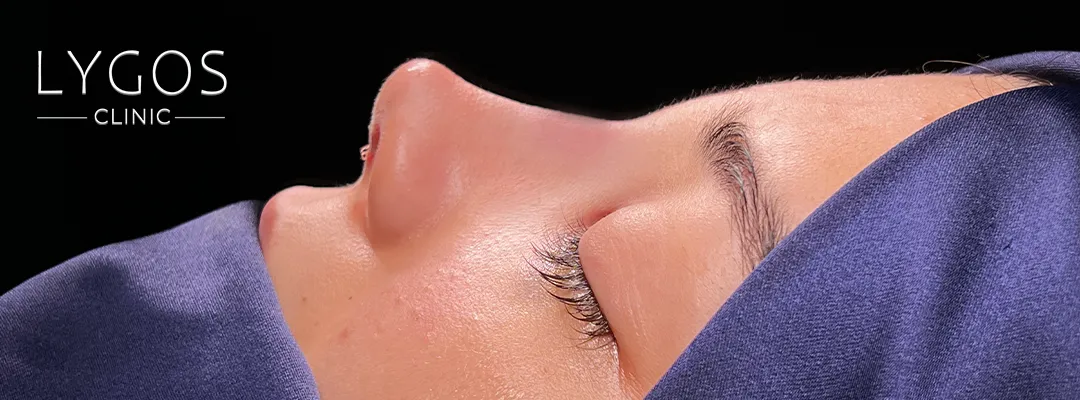After Nose Surgery | Nasal Splint Removal | LYGOS 2025

What You Need to Know About After Nose Surgery
Recovering after nose surgery, or rhinoplasty, involves understanding the healing process, caring for yourself, and knowing what changes to expect in the days, weeks, and even months post-surgery. This article covers everything you need to know about managing each stage of recovery, from the immediate aftermath to appreciating the long-term results. This guide is especially helpful for those seeking to make informed decisions about post-operative care and ensure their journey after nose surgery is as smooth as possible.
What is After Nose Surgery?

After nose surgery, or post-rhinoplasty, refers to the recovery phase following a nose job. This phase aims to allow your nose to heal, swelling to subside, and results to gradually emerge. While the structure of the nose is delicately reshaped during after nose surgery, the healing process that follows is equally important to achieve the desired look.
After Nose Surgery Recovery
Recovery following an after nose surgery differs for each person and depends on the specific procedures undertaken. Common experiences during this period include swelling, bruising, and mild discomfort. While these side effects are normal, they can take time to resolve, and patients are advised to follow specific aftercare instructions. The entire process can take several months to a year to see the final results, but most patients feel comfortable and look presentable by the two to three-week mark.
Rhinoplasty Recovery Day by Day

To better understand the progression after nose surgery, here’s a day-by-day breakdown of what most patients can expect:
Day 1-3: Immediate After Nose Surgery Phase In the first few days, ample rest is essential, as swelling, bruising, and some discomfort around the nose and eyes are common. Most surgeons will provide medication to ease pain and minimize inflammation. Keeping the head elevated and applying cold compresses can help minimize swelling. Avoiding strenuous activities and limiting facial movements can aid in a smoother start to the recovery.
Day 4-7: Managing Swelling and Bruising As the initial bruising starts to fade, patients may begin to feel a bit more comfortable. Swelling remains but starts to decrease gradually. It’s still important to rest and avoid any actions that might stress the nasal area. Light walks can be introduced, but bending over or lifting heavy items should still be avoided.
Day 8-14: Starting to Feel and Look Better By this stage, swelling continues to decrease, and many patients feel prepared to return to light, everyday activities. The nose may still look swollen, but bruises typically begin to fade. This is also around the time when the nasal splint may be removed, which feels like a significant milestone in the recovery process.
Week 3-6: Subtle Recovery Changes As patients move into the third week, the nose looks more natural, with gradual contouring and shaping becoming visible. While full results are still months away, many are pleasantly surprised by the progress. Most patients feel confident enough to resume social engagements, provided they follow their surgeon’s guidance on activity restrictions.
Week 6-12: Seeing Long-Term Results Between the second and third month, the nose usually starts to settle into its new shape. Swelling is greatly reduced, though some residual puffiness, especially at the nasal tip, may remain. By this point, patients typically feel more satisfied with their appearance, although the final results may still evolve over the following months.
Nasal Splint Removal
Nasal splints are typically removed one week after nose surgery, marking a critical step in the recovery. This removal allows patients to see the initial shape of their nose, albeit with some residual swelling. This step is typically quick and painless, and most patients feel relieved to move beyond it.
How Can You Care for Yourself at Home?
Proper home care plays an essential role in recovery after nose surgery. Here are key tips for managing this period comfortably:
- Follow Prescriptions: Take pain relief and anti-inflammatory medications as prescribed by your surgeon.
- Hydration and Diet: Staying hydrated and eating nutritious foods can support faster healing.
- Avoid Smoking and Alcohol: Both can interfere with healing and increase swelling.
- Keep Your Head Elevated: Elevation helps minimize swelling, particularly during the first week.
- Be Patient: Full recovery takes time, so it’s essential to trust the process and follow your surgeon’s guidelines closely.
Rhinoplasty Before and After
The journey before and after nose surgery is transformative, with each patient experiencing different results based on individual goals and facial structure. Before surgery, patients may have concerns about asymmetry, nasal bumps, or breathing issues. After nose surgery, these issues are addressed, but adapting to a new look takes time. In addition to visible physical changes, many patients feel an increase in confidence and self-esteem. It’s important to maintain realistic expectations, as the nose’s final shape may take up to a year to fully develop.
In Conclusion
Recovery after nose surgery is a gradual journey, marked by important milestones throughout the process. While it may be challenging at times, following aftercare instructions, managing your expectations, and being patient can lead to excellent results. For most, the effort is well worth the outcome, and a successful rhinoplasty can enhance both appearance and confidence. You can contact our expert team for more detailed information about after nose surgery.
You can click on the link to follow our social media content.


